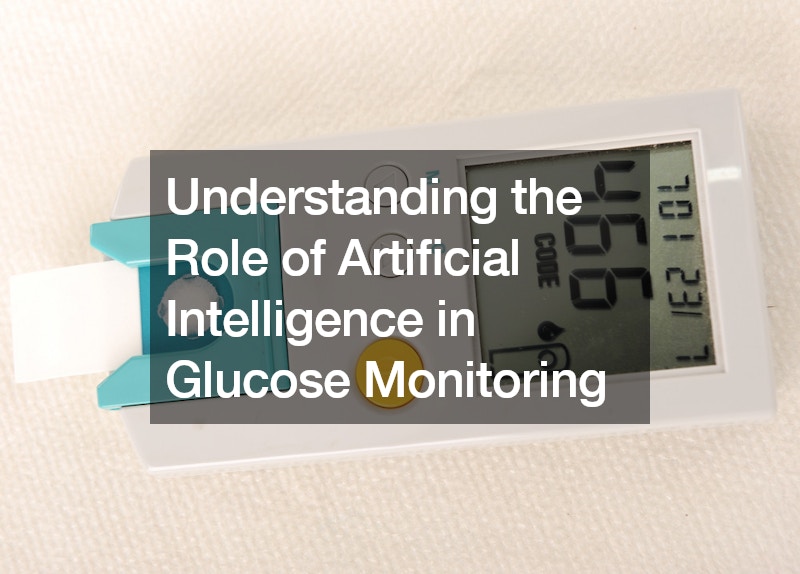In recent years, advancements in technology have revolutionized the field of healthcare, with artificial intelligence (AI) playing a pivotal role in numerous medical applications. One significant area where AI has made substantial inroads is glucose monitoring. For individuals living with diabetes, effective glucose monitoring is crucial for maintaining optimal blood sugar levels and preventing complications. This article delves into how AI is transforming glucose monitoring and what this means for diabetes management.
The Basics of Glucose Monitoring
Glucose monitoring is essential for managing diabetes. Traditional methods involve the use of glucometers, where individuals prick their fingers to obtain a blood sample. This sample is then analyzed to measure blood glucose levels. While effective, this method can be painful, inconvenient, and only provides a snapshot of glucose levels at a single point in time.
The Rise of Continuous Glucose Monitoring (CGM)
Continuous glucose monitoring (CGM) systems have emerged as a game-changer in diabetes management. Unlike traditional glucometers, CGM devices continuously track glucose levels throughout the day and night. Using a small sensor that is inserted under the skin, these systems measure interstitial glucose levels in real time. The data is then transmitted to a receiver or a smartphone app, providing users with a comprehensive view of their glucose trends.
Integrating AI with CGM
The integration of AI with CGM systems takes glucose monitoring to an entirely new level. AI algorithms analyze the vast amounts of data generated by CGM devices to identify patterns and trends that may not be immediately apparent to the user or their healthcare provider. Here are several ways AI is enhancing glucose monitoring:
Predictive Analytics: AI can predict future glucose levels based on historical data and current trends. This allows individuals to take proactive measures to prevent hyperglycemia (high blood sugar) or hypoglycemia (low blood sugar). For instance, if the AI predicts a potential drop in glucose levels during the night, the user can consume a small snack before bedtime to maintain stable levels.
Personalized Recommendations: AI algorithms can provide personalized recommendations tailored to an individual’s unique glucose patterns. These recommendations can include adjustments to diet, exercise, and medication. By considering factors such as the time of day, recent meals, and physical activity, AI offers actionable insights that can significantly improve diabetes management.
Enhanced Accuracy: AI helps improve the accuracy of glucose monitoring systems by filtering out noise and outliers in the data. This leads to more reliable readings, reducing the risk of incorrect dosage adjustments and associated complications.
Automated Insulin Delivery: One of the most promising applications of AI in glucose monitoring is its role in automated insulin delivery systems, also known as artificial pancreas systems. These systems use AI to continuously monitor glucose levels and automatically adjust insulin delivery via an insulin pump. This closed-loop system mimics the function of a healthy pancreas, maintaining glucose levels within a target range with minimal user intervention.
Benefits of AI-Driven Glucose Monitoring
The integration of AI into glucose monitoring systems offers several benefits for individuals with diabetes:
Improved Glycemic Control: By providing real-time insights and predictive analytics, AI helps users maintain more stable glucose levels, reducing the risk of both hyperglycemia and hypoglycemia. This improved control can lead to better long-term health outcomes.
Reduced Burden: Traditional glucose monitoring requires frequent finger pricks and manual record-keeping. AI-driven systems automate data collection and analysis, reducing the burden on individuals and allowing them to focus on other aspects of their lives.
Enhanced Quality of Life: With AI-powered CGM systems, individuals can live more freely without constantly worrying about their glucose levels. The ability to receive timely alerts and personalized recommendations empowers users to make informed decisions, leading to an improved quality of life.
Data-Driven Insights for Healthcare Providers: AI-generated data and trends can be shared with healthcare providers, enabling more informed decision-making during consultations. This collaborative approach enhances the overall effectiveness of diabetes management.
Challenges and Future Directions
While the benefits of AI in glucose monitoring are undeniable, there are challenges that need to be addressed. Ensuring data privacy and security is paramount, as sensitive health information is continuously transmitted and analyzed. Additionally, the accuracy of AI algorithms depends on the quality and diversity of the data they are trained on. Ongoing research and development are necessary to refine these algorithms and ensure they are effective across diverse populations.
Looking ahead, the future of AI in glucose monitoring is promising. Continued advancements in sensor technology, machine learning, and data analytics will further enhance the capabilities of CGM systems. As AI becomes more integrated into everyday healthcare, individuals with diabetes can expect even greater support in managing their condition.
Conclusion
Artificial intelligence is transforming glucose monitoring, offering unprecedented insights and support for individuals with diabetes. By leveraging predictive analytics, personalized recommendations, and automated insulin delivery, AI-driven CGM systems are revolutionizing diabetes management. As technology continues to evolve, the future holds even more promise for improving the lives of those living with diabetes through advanced AI-powered solutions.
.







